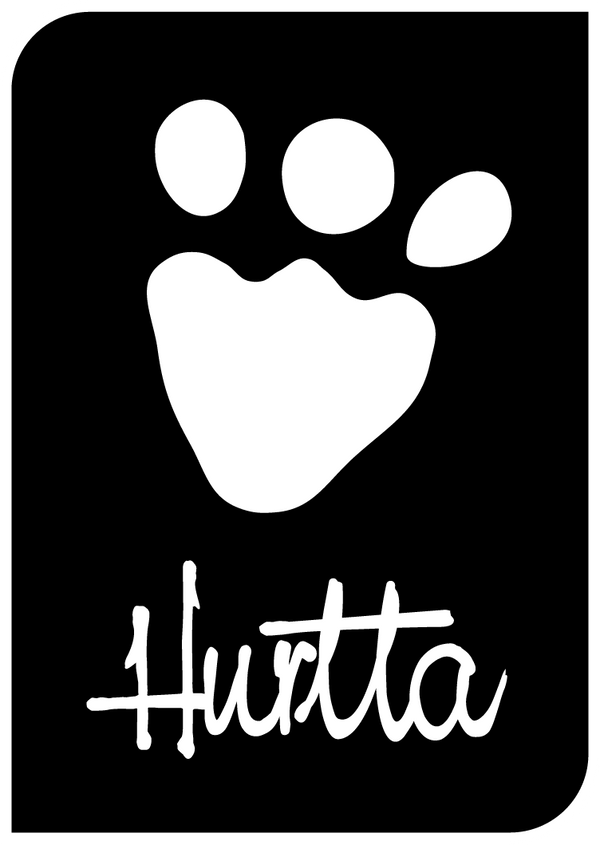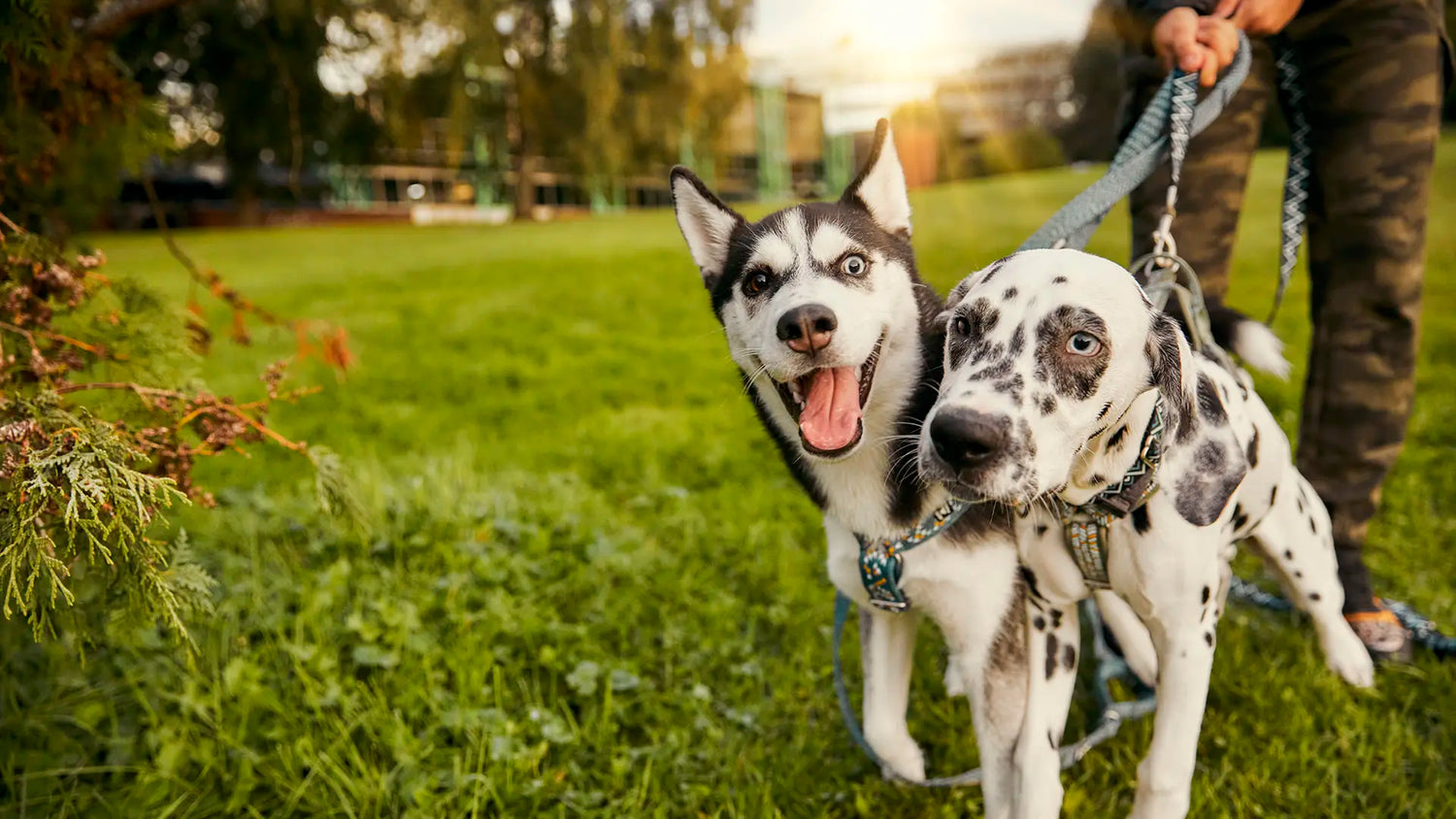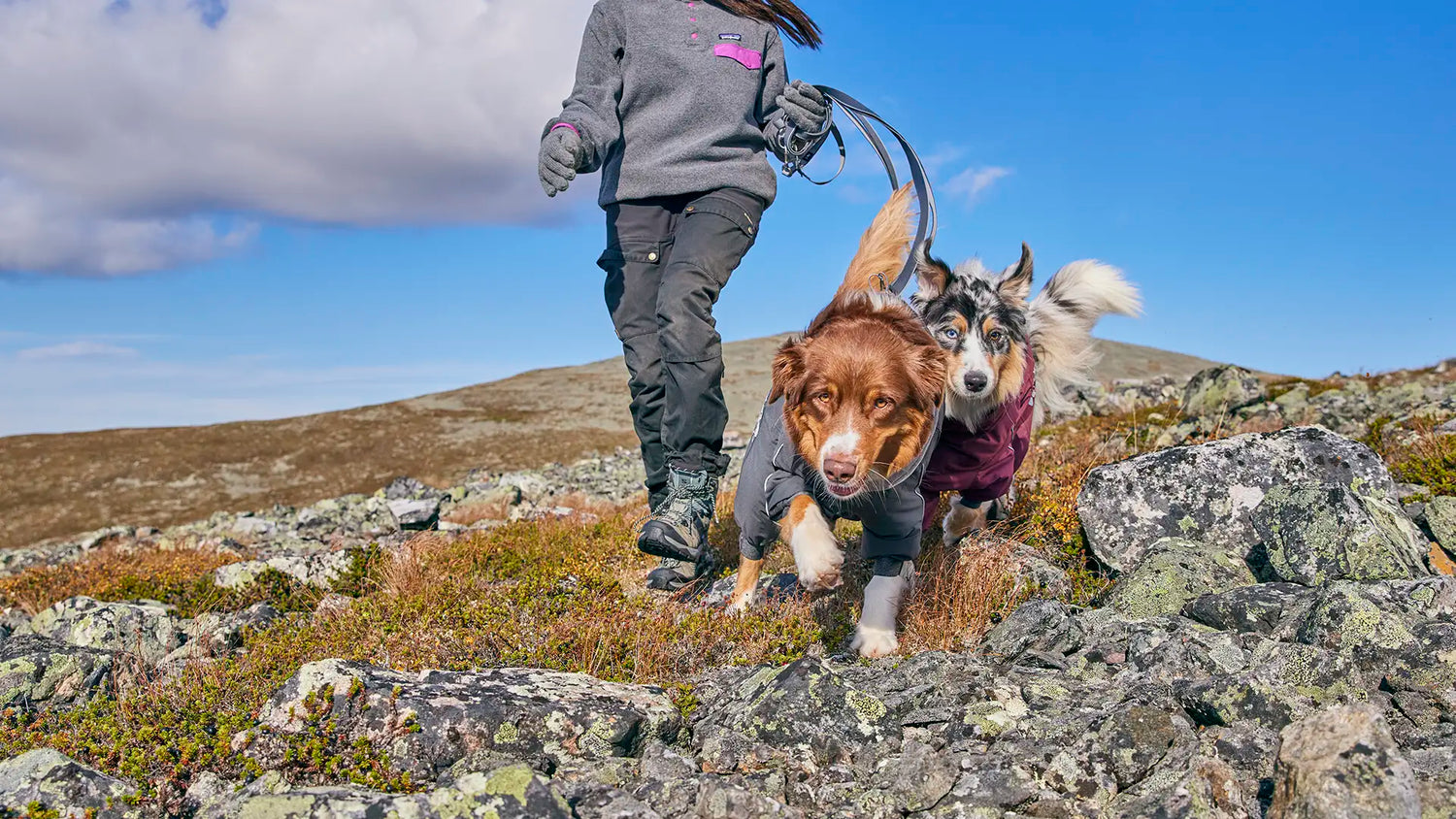The gentle, warm years
When a dog reaches their senior years, life naturally begins to settle. The pace slows, routines feel familiar, and the connection between human and dog often grows deeper than ever. Warmth, rest and gentle companionship make this stage comfortable and meaningful. Offering a senior dog thoughtful care, softness and presence is a way of honoring every year shared so far.
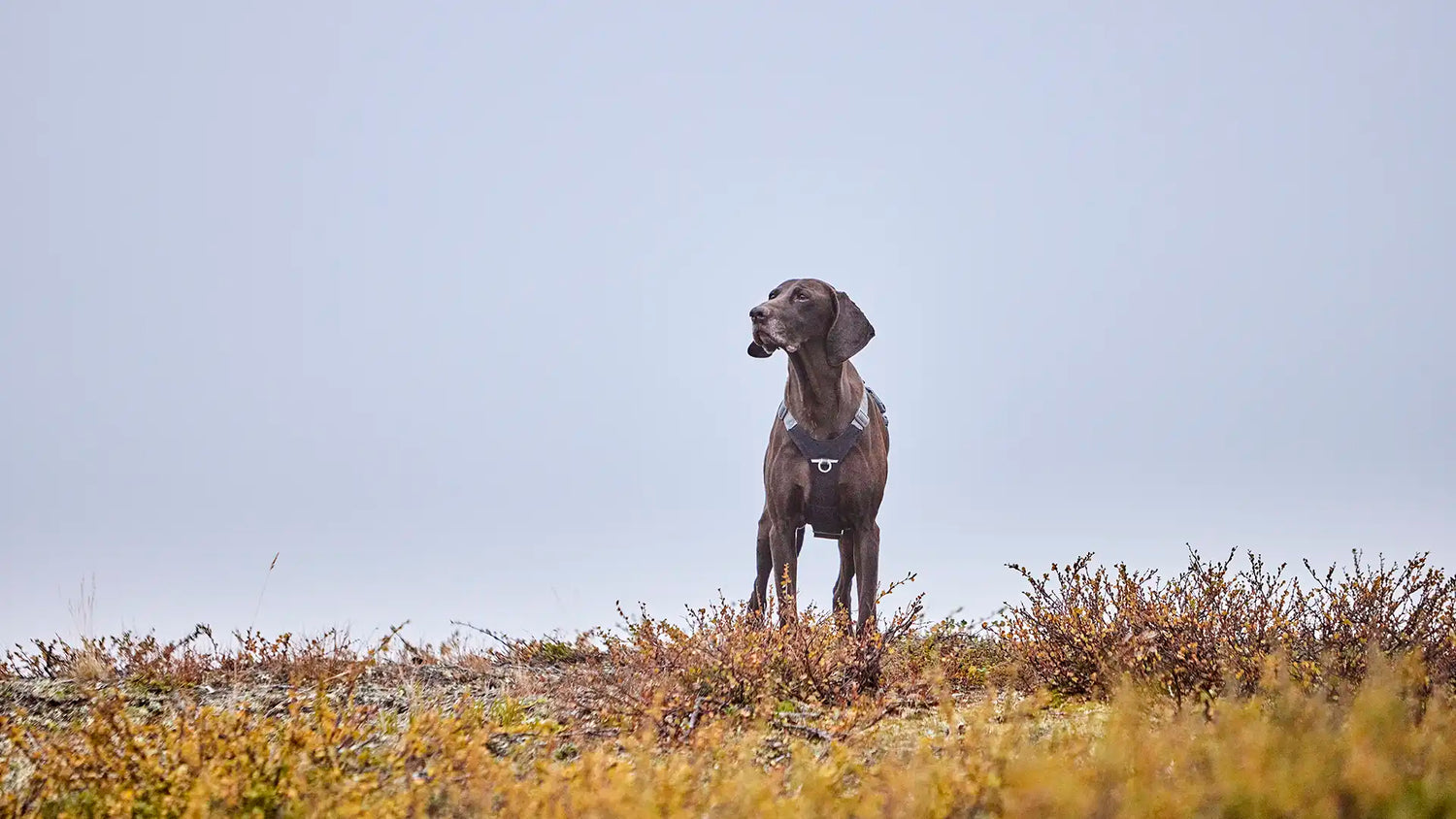
When is senior dog age?
Dogs are typically considered senior from around seven years of age, but the signs of aging appear differently from dog to dog. Breed, size, genetics, nutrition and lifestyle all play a role.
Small breeds, such as Jack Russell Terriers, Cocker Spaniels and Chihuahuas, may still be bright and energetic at this age with few physical changes. Larger breeds, including Great Danes, Bernese Mountain Dogs and Saint Bernards, often show signs sooner.
Signs your dog is getting old includes:
- Graying or thinning fur
- Reduced hearing or vision
- A calmer pace or reduced stamina
Often, we notice aging through small shifts in daily life. Walks become slower with longer pauses to sniff. Swimming turns into wading. A game of fetch is replaced with resting in a cool patch of shade. Sleep becomes longer and deeper.

Signs your senior dog is healthy
A healthy senior dog may move more slowly, but they still show interest in the world around them. They enjoy gentle exploration, familiar routines and calm time together.
Look for:
- Curiosity about scents and surroundings
- Comfortable, steady movement
- A relaxed appetite and regular digestion
- Deep, restful sleep
- Willingness to join short outings
- Enjoyment of quiet closeness
As dogs age, they may take a moment to wake and stretch. Changes in hearing or vision are common. Familiar scents and a consistent resting place help them feel safe and settled.
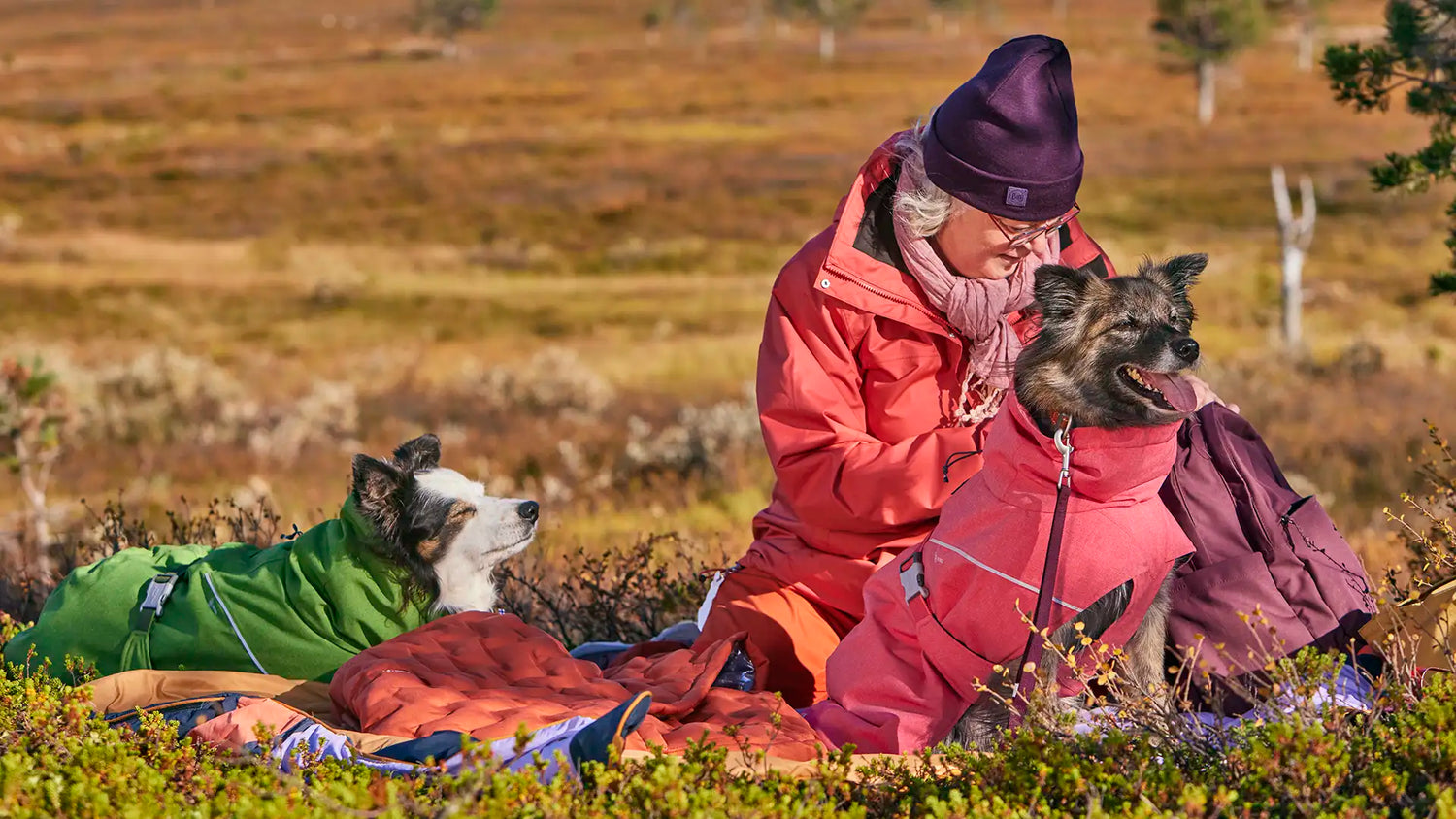
Choosing the right clothing and equipment for a senior dog
An old dog will benefit from gear that protects their muscles, helps keep them warm, and supports comfortable movement. As fur thins and metabolism slows, the body produces and retains less warmth. A dog who once handled cold weather with ease may now prefer wearing a coat outdoors. Warmth can also help reduce stiffness after walks and support recovery.
Look for gear that:
- Covers the major muscle groups
- Insulates without restricting movement
- Uses soft, flexible materials that feel comfortable against the body
Foil-lined coats reflect the dog’s own body heat back toward the muscles, providing gentle warmth. On rainy or windy days, a soft midlayer beneath a lightweight raincoat offers protection without bulk.
For many senior dogs, a harness is more comfortable than a collar. It distributes pressure across the chest rather than the neck, helping to protect the larynx and spine. A harness with a handle allows the owner to assist the dog on stairs or uneven ground.
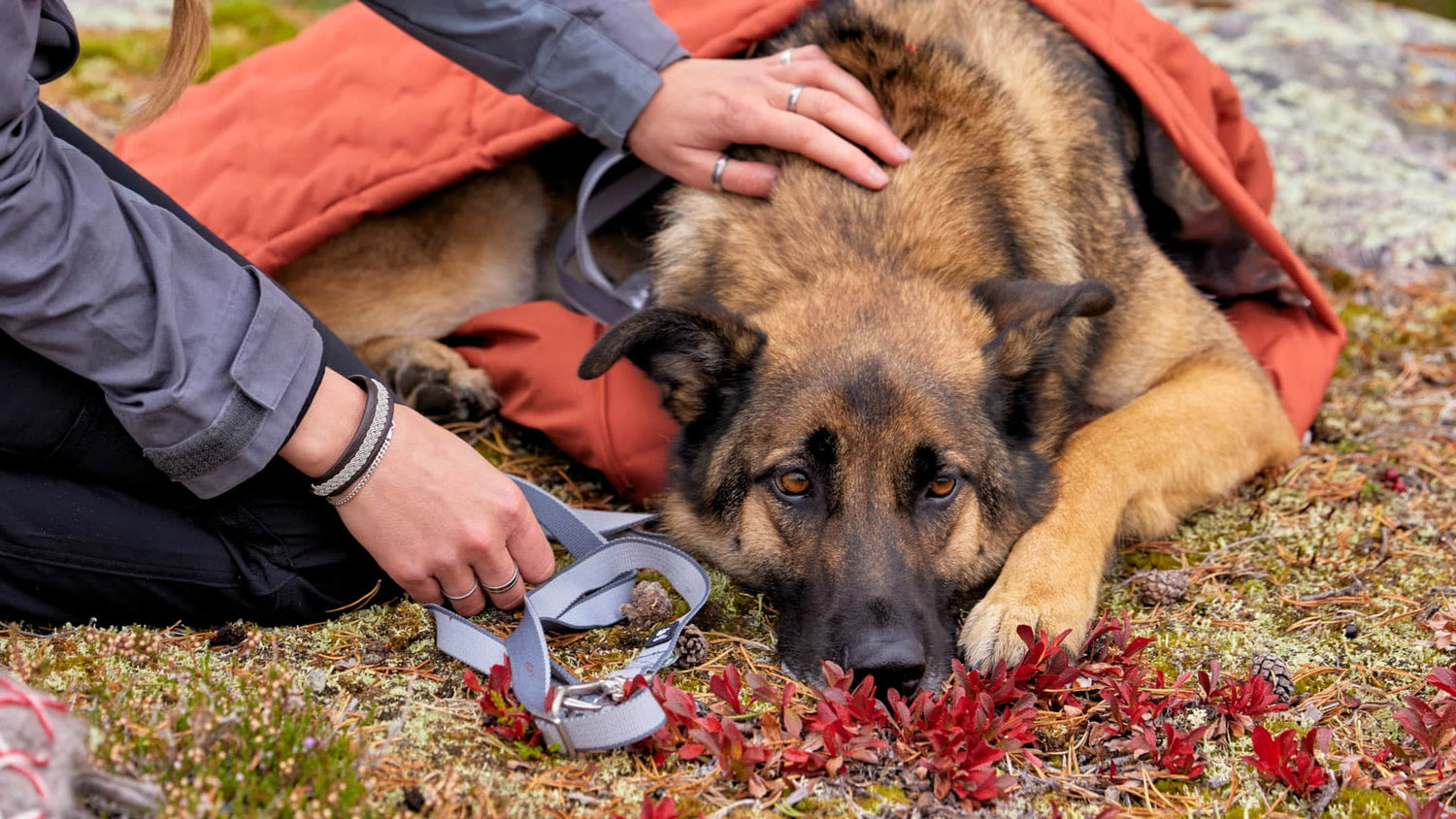
Sleepover Sleeping Bag
A soft, warm place to retreat to. The top unzips so the dog can climb in independently or with gentle assistance, which is helpful for dogs who move more slowly.
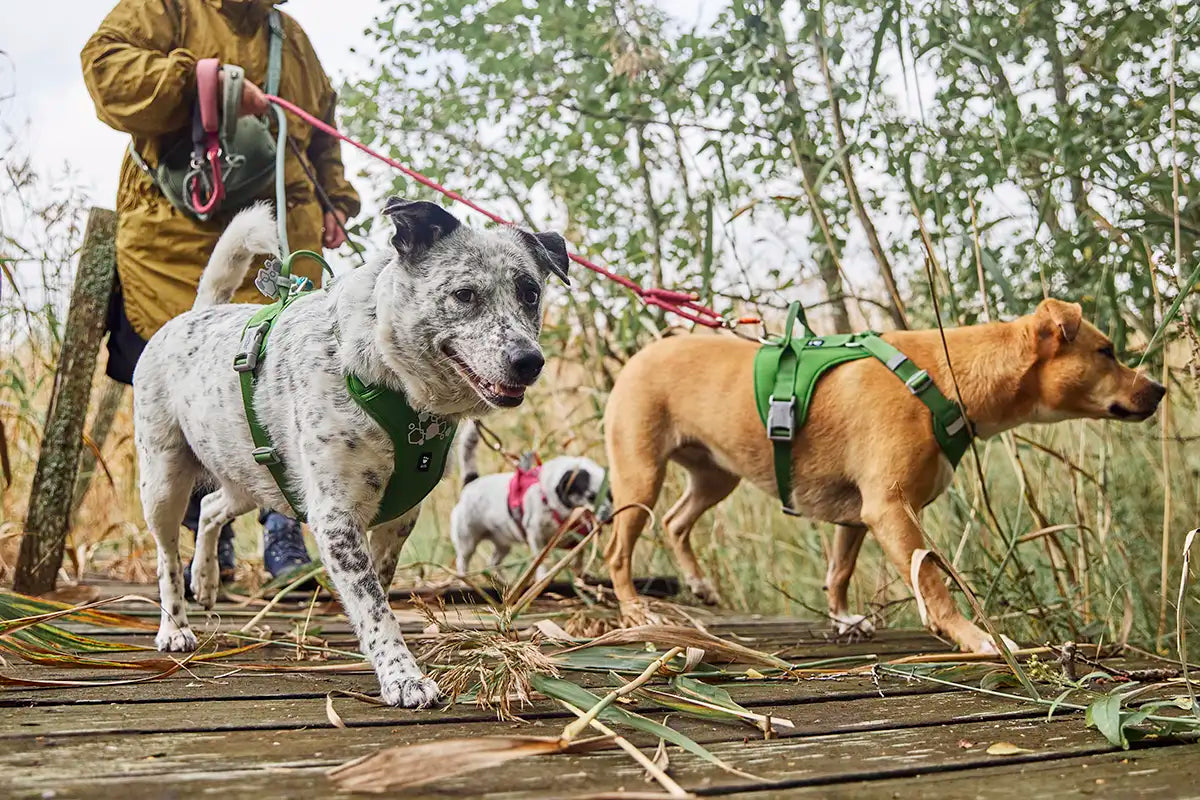
Weekend Warrior Harness II ECO
The Weekend Warrior Harness is an excellent option for an older dog, as it is designed to be very ergonomic and easy to put on without lifting the dog’s legs.
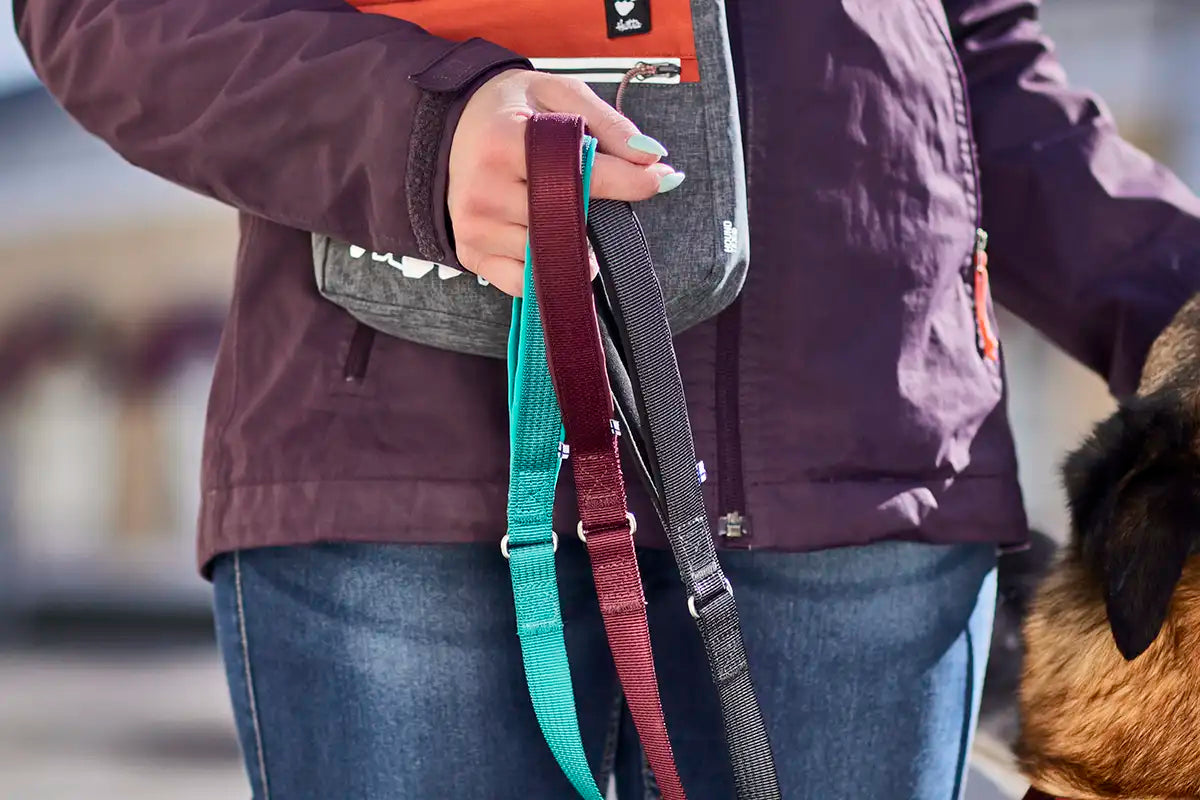
Weekend Warrior Standard Leash
A durable and comfortable everyday lead that pairs well with the harness. The padded handle provides a soft grip for the owner, including during longer or slower walks.
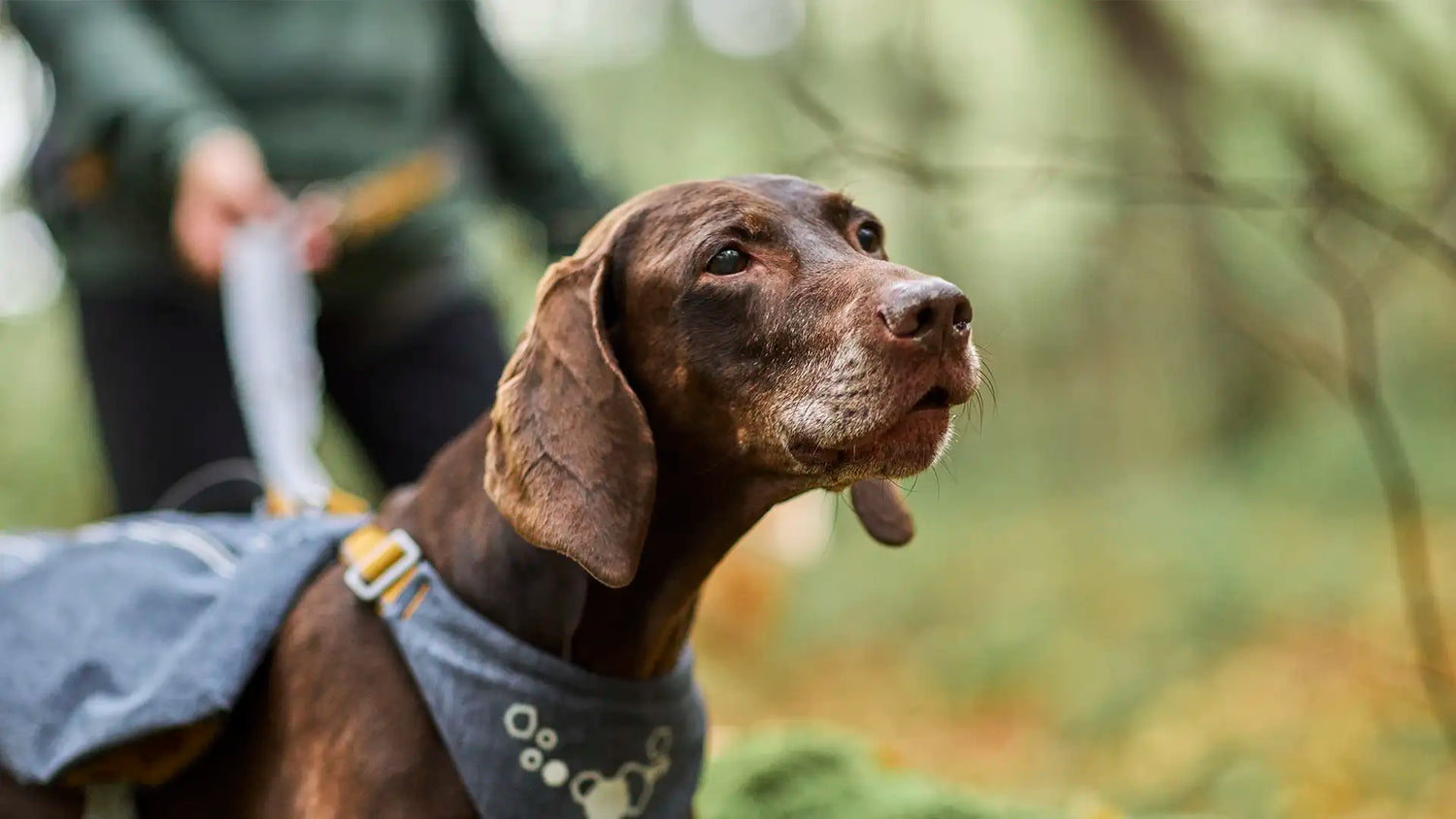
What a senior dog’s coat says about its needs
A thinning or changing coat can be an early sign that the dog could benefit from additional warmth. Reduced coat density and slower circulation make it harder for the dog to maintain body warmth, especially in wind, rain or cold.
Supporting the coat from the outside helps:
- A soft midlayer adds warmth
- A raincoat blocks wind and moisture
- Layering gives flexibility day to day
Warmth is not luxury at this stage — it is part of comfort, mobility and recovery.
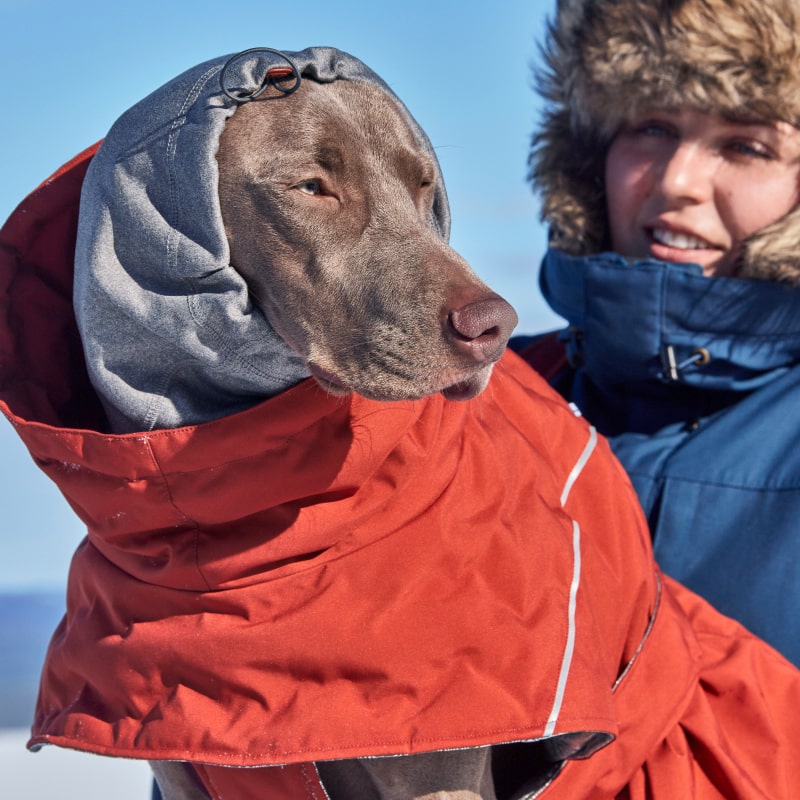
Extreme Warmer III ECO
The Extreme Warmer III effectively protects and warms the dog by covering the large muscle groups. The foil lining reflects the dog’s body heat back to the body, providing additional warmth.

Monsoon Coat II ECO
Cold air stiffens an elderly dog that already moves slowly. A raincoat protects not only from rain but also from wind and chill.
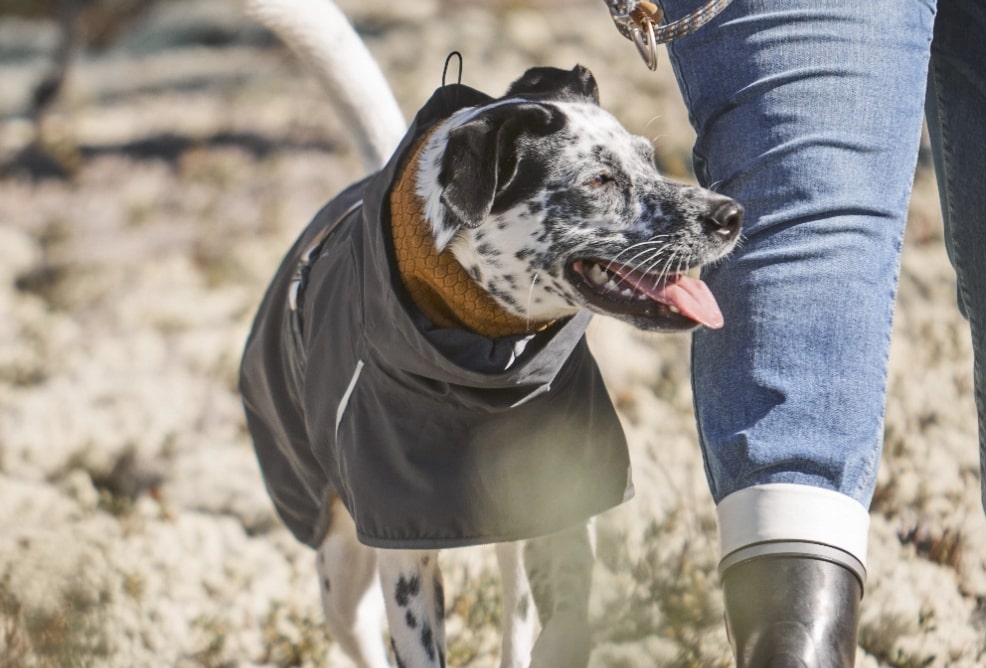
Warming Midlayer ECO
A lightweight and soft midlayer can be worn under the raincoat and feels warm on the dog.
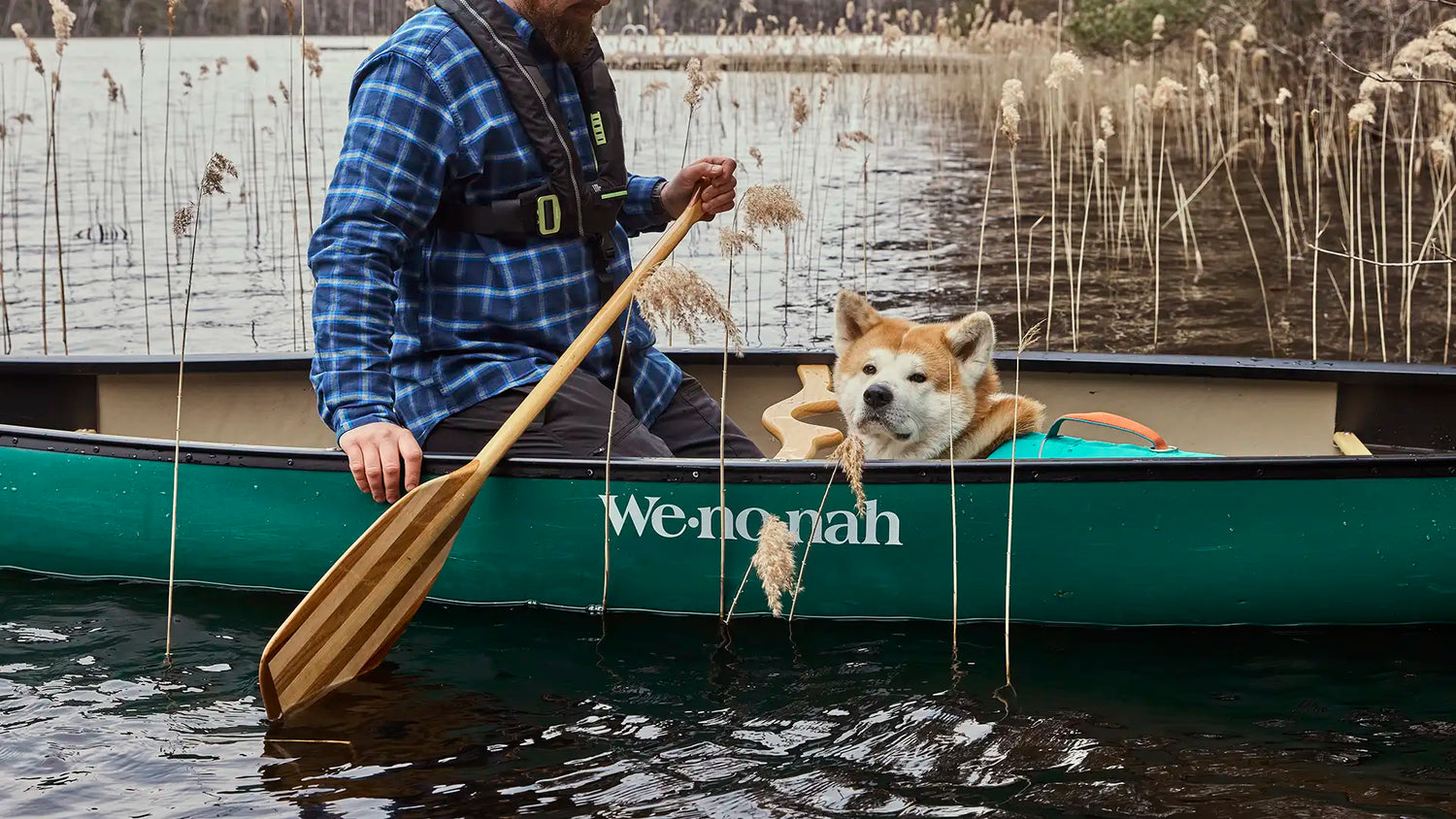
Senior dog hobbies, training and recovery needs
A senior dog may retire from physically demanding activities, but they still need stimulation and moments of success. The goal shifts from exertion to gentle enrichment.
Supportive activities include:
- Quiet scent trails and search tasks
- Simple puzzle games
- Slow, unstructured sniff walks
- Time spent observing the world together
These activities keep the mind active and maintain the bond between dog and owner. Shared time becomes less about distance covered and more about presence.

Warmth and recovery
Warmth supports circulation and helps muscles stay comfortable and loose. Cold air can lead to stiffness and slow recovery after activity. A well-fitted, insulating coat can make walks more enjoyable and minimise soreness afterward.
Rest becomes a central part of wellbeing. An old dog may not wake easily and often need time to stretch before standing or walking. A soft, warm resting place at home — and on the go — helps the dog relax deeply and recover fully.
Life with a senior dog invites us to slow down. The rush fades, and what remains are the quiet moments side by side, shared with ease and trust.
